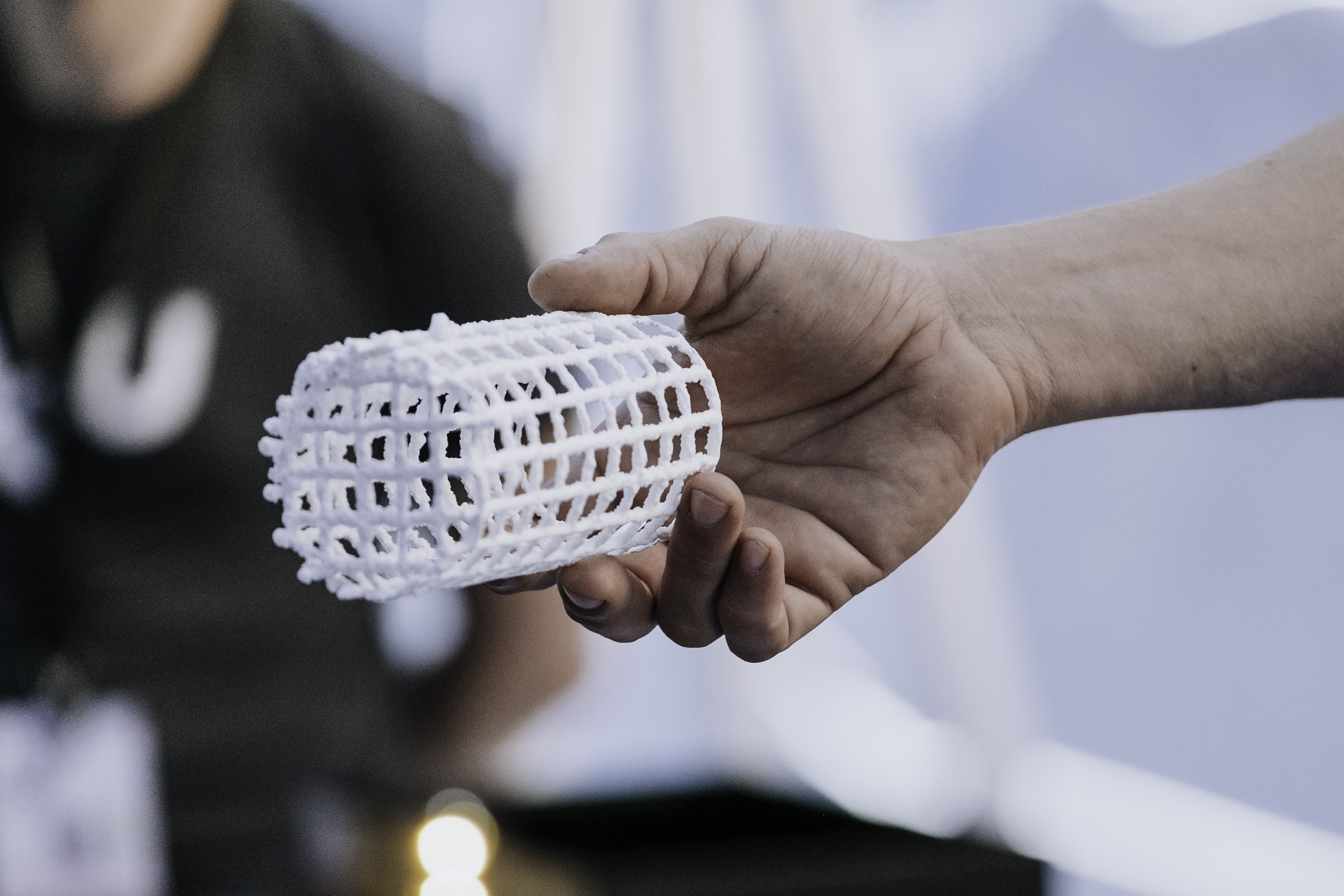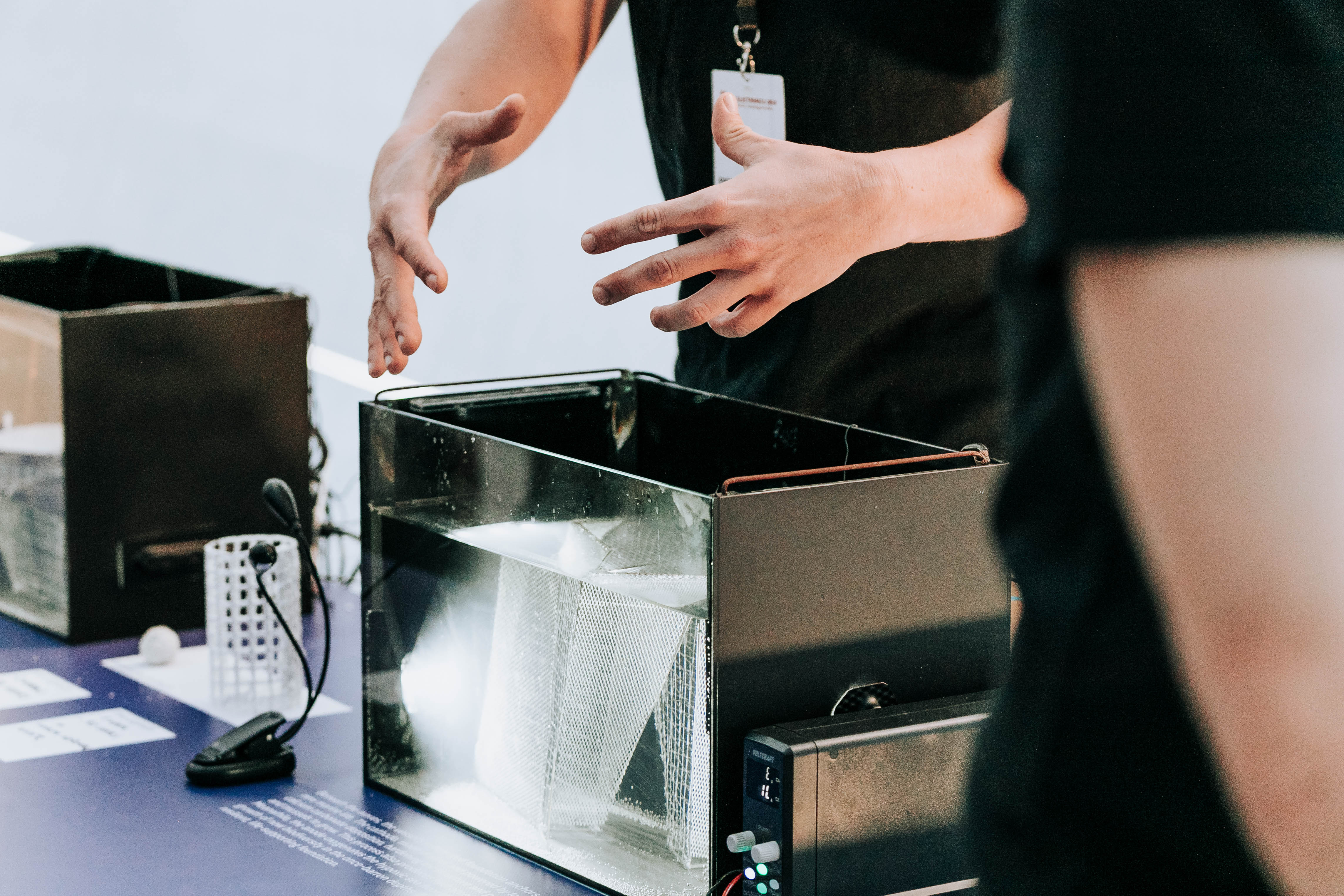








Marine research vessel
biorock /
biomaterials /
interspecies coexistence /storytelling / biodiversity /electrolysis/ installation / marine laboratory / sustainable architecture
Link
https://ars.electronica.art/hope/en/spaceship-from-hope/
From a future where technology and nature have finally found harmony, a lone maritime research vessel drifts through the desolate seas, a fragile outpost of humanity in the aftermath of global catastrophe. Divided into two crucial sections, it sustains life above the waves while anchoring hope beneath them. The upper deck houses the laboratory and living quarters, protected by walls of chitosan and melanin, shielding the last researchers from the sun's deadly rays. These materials, harvested from crabs, are their armor against a hostile world.
Below the surface, the vessel's foundation hums with low-voltage electricity, driving the slow accretion of calcium carbonate. This process hardens the structure, creating a new habitat where corals and mussels can take root. Through biomineralization, these creatures form resilient shells and skeletons, forging a sanctuary in the depths.
In this precarious balance, the vessel becomes a beacon of survival and hope. The researchers aboard dedicate themselves to studying the emergent biodiversity and the possibilities of interspecies coexistence around them, recognizing that these are the keys to a future where life can endure. As technology and nature intertwine within this floating sanctuary, they search for a way to restore balance to a world teetering on the edge. In the resilience of coral reefs and the harmonious growth of diverse species, they find the fragile promise of a future where life, in all its forms, can once again thrive.
Credits:
Developed by: Marko Vivoda in HEKA
HEKA
is a laboratory at the intersection of science, art and the economy
based on the concept of so-called »citizen science«.
It is a platform of networking and cooperation between different
stakeholders, establishing a dialogue between society and science
using art and artistic thinking. The primary starting point of HEKA
is the introduction of empathic curiosity and compassion, which is
characteristic of art, into scientific methods of research. The guiding
principle is the awareness that technology, art and the economy
always impact an individual and society. Therefore, we want to bring
these areas closer to individuals in harmony.
Working thematic areas:
- Researching the human impacts on the marine ecosystem.
- Researching spatial sound reproduction.
- Researching biomaterials
Link:
https://www.mcruk.si/en/article/heka
HEKA:
Director: Borut Jerman
Creative director: Marko Vivoda
Spatial sound reasercher, and curator: Mauricio Valdes San Emeterio
BioLab Reasercher: Marko Vivoda
Link
https://ars.electronica.art/hope/en/spaceship-from-hope/
From a future where technology and nature have finally found harmony, a lone maritime research vessel drifts through the desolate seas, a fragile outpost of humanity in the aftermath of global catastrophe. Divided into two crucial sections, it sustains life above the waves while anchoring hope beneath them. The upper deck houses the laboratory and living quarters, protected by walls of chitosan and melanin, shielding the last researchers from the sun's deadly rays. These materials, harvested from crabs, are their armor against a hostile world.
Below the surface, the vessel's foundation hums with low-voltage electricity, driving the slow accretion of calcium carbonate. This process hardens the structure, creating a new habitat where corals and mussels can take root. Through biomineralization, these creatures form resilient shells and skeletons, forging a sanctuary in the depths.
In this precarious balance, the vessel becomes a beacon of survival and hope. The researchers aboard dedicate themselves to studying the emergent biodiversity and the possibilities of interspecies coexistence around them, recognizing that these are the keys to a future where life can endure. As technology and nature intertwine within this floating sanctuary, they search for a way to restore balance to a world teetering on the edge. In the resilience of coral reefs and the harmonious growth of diverse species, they find the fragile promise of a future where life, in all its forms, can once again thrive.
Credits:
Developed by: Marko Vivoda in HEKA
HEKA
is a laboratory at the intersection of science, art and the economy
based on the concept of so-called »citizen science«.
It is a platform of networking and cooperation between different
stakeholders, establishing a dialogue between society and science
using art and artistic thinking. The primary starting point of HEKA
is the introduction of empathic curiosity and compassion, which is
characteristic of art, into scientific methods of research. The guiding
principle is the awareness that technology, art and the economy
always impact an individual and society. Therefore, we want to bring
these areas closer to individuals in harmony.
Working thematic areas:
- Researching the human impacts on the marine ecosystem.
- Researching spatial sound reproduction.
- Researching biomaterials
Link:
https://www.mcruk.si/en/article/heka
HEKA:
Director: Borut Jerman
Creative director: Marko Vivoda
Spatial sound reasercher, and curator: Mauricio Valdes San Emeterio
BioLab Reasercher: Marko Vivoda